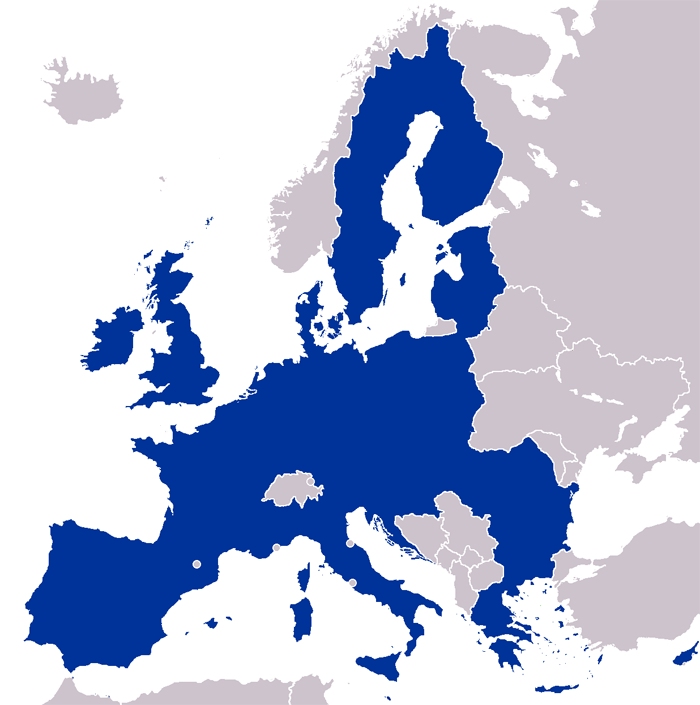The European Single Procurement Document (ESPD) is two years old this week, but most UK architects have yet to take advantage of the time saving and efficiency gains it offers when responding to public sector tenders.
The ESPD replaces the need to submit all the documentation commonly required for a practice to prove that it meets core compliance requirements to participate in a restricted procedure when tendering anywhere in the EU.
In a major departure from the outgoing system, actual documentation supporting the ESPD declaration need not be submitted with the tender. It is only called up for scrutiny if the bid is successful and the tender is won. The ESPD is now a European standard that also provides a self-declaration of a practice’s eligibility to submit a bid.
What’s more, it only needs to be filled in once and as long as the information remains up to date it can be re-used for other public sector tenders.
The arrival of the ESPD (see guidance) should signal the end of the standard Pre-Qualification Questionnaire (PPQ) used by government agencies as well as other PQQs used by local public sector bodies, although in practice the UK is still in transition.
Standard selection criteria for direct government projects in England, Wales and Northern Ireland (formerly set out in the Crown Commercial Service PQQ) are already aligned to the European standard ESPD – details are set out in Procurement Policy Note (PPN) 8/16.

Last year was the deadline for all EU states to adopt the ESPD. Architect Walter Menteth, director of the Project Compass procurement intelligence service, says whether or not public sector bodies such as local authorities are undertaking their PQQs properly, they are now bound to accept submission of an ESPD for the core compliance elements of tendering (generally Parts 1 and 2 of selection criteria).
The European Commission provides a free online ESPD service for buyers and bidders to create an ESPD. The buyer’s online form should be filled in electronically for online procurement or may still be printed and sent to the bidder with the rest of the tender documents.
So how is the standard electronic procurement model supposed to work across the EU? The public sector buyer of services issues the ESPD from the standard template and selects the defining exclusion and selection criteria as part of its tender documents. The architect or other bidder can use the online ESPD service to individually complete the documentation and then submit it along with the tender.
Importantly, practitioners can still use the ESPD service, whether or not the buyer is up to speed on procurement and sending out an ESPD, and submit it alongside their technical tender documents. An architect’s practice can edit, store and reuse its ESPD so that it becomes its ‘business passport’ for all future tenders across the UK and EU.
All public bodies in England and Wales have been obliged to accept the ESPD for any procurement above EU thresholds since January 2016. In Scotland, all public bodies must already both issue and accept the ESPD.
The use of paper versions of ESPDs will cease altogether from 18 April 2018, at which point all public sector buyers will be accepting the ESPD electronically.
The ESPD service has already been integrated with e-Certis, the EU’s repository of certificates required for all public procurement across the EU.
This new EU digital PQQ, the ESPD, may also be completed by inserting hyperlink references giving access to documents required for compliance, so long as these are securely held in a repository accessible to the system. When undertaken this way, there will then be no need to submit the compliance documentation directly. The hyperlinks may point to an approved repository or a practice’s own facilities.
‘There is an opportunity for the RIBA to take on this role. Most architects have to do the bulk of this compliance every year to fulfil their RIBA Chartered Practice requirements,’ says Menteth.
‘Practices could simply supply a direct link to the RIBA’s database of Chartered Practice details, which would massively simplify the tendering process.’
Many questions regarding the EU procurement situation for UK architects post-Brexit, of course, are still to be answered. The ESPD procurement ‘passport’ should still be valid in any case as a declaration of a company’s suitability to tender for public sector work across the EU.
Automatic acceptance of professional certification, on the other hand, will be dependent on whether mutual recognition of qualifications survives beyond Brexit, an outcome for which the RIBA continues to campaign.
Thanks to Walter Menteth, Director, Walter Menteth Architects and Director, Project Compass CIC.
Text by Neal Morris. This is a Professional Feature edited by the RIBA Practice team. Send us your feedback and ideas.
RIBA Core Curriculum Topic: Procurement and contracts.
As part of the flexible RIBA CPD programme, Practice News counts as microlearning. See further information on the updated RIBA CPD Core Curriculum and on fulfilling your CPD requirements as an RIBA Chartered Member.
Posted on 25 January 2018









